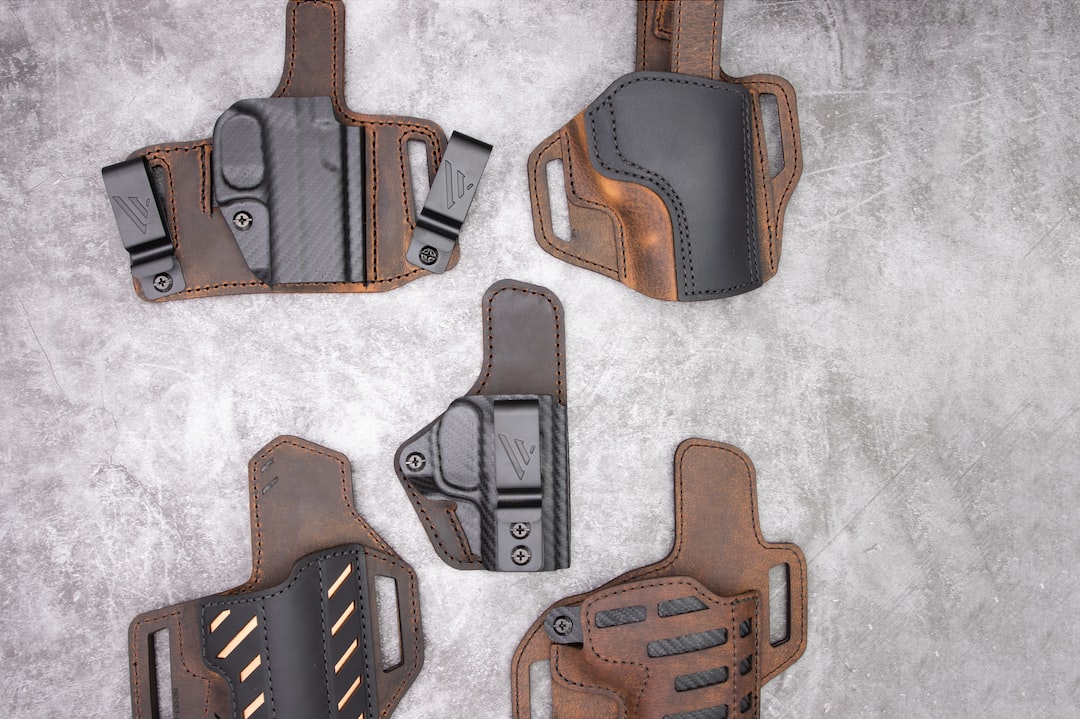
Why Paddle Holsters Are a Must-Have for Concealed Carriers
Paddle holsters clip directly onto the belt. This improves concealment and reduces printing. Whether you carry strong-side, appendix, or 4 o’clock, a paddle holster is an excellent option for comfortable, reliable concealed carry.
Concealment
Paddle holsters sit low and angle away from the body, making them easier to conceal than inside-the-waistband (IWB). Some paddle holsters also feature a clip that grabs onto the waistband or belt, turning it into an artificial belt slide for a more secure carry experience.
However, some people may find that the angled design of a paddle holster can cause it to reveal more printing under specific clothing – which defeats the purpose of concealed carry in some cases. For these reasons, you’ll want to choose a paddle holster with adjustable features that allow you to position it so that the gun is hidden in most situations.
Modern paddle holsters are typically made of Kydex, which is heat-molded to fit your specific weapon model for a perfect fit and reliable performance. This durable, lightweight, and comfortable material is ideal for your concealed carry holster. You’ll also be able to adjust the retention on a paddle holster to control how much pressure it exerts on your gun when you draw it from the holster.
Convenience
A paddle holster is extremely easy to clip onto your belt or waistband. It can be done with just one hand, whereas an IWB holster requires that you remove your firearm and put it back in to take it off or put it on.
In addition, paddle holsters are generally more comfortable than IWB holsters. The paddle doesn’t rub against the inside of your pants, and a high-quality paddle will have a curved design that contours your body for added comfort.
The paddle also uses friction to secure the holster, rather than a physical retention feature like a belt loop. That means finding a paddle holster with a quality clip that’s sturdy enough to keep your gun in place is essential. The pin can easily slip off your belt and dislodge your holster if the pin isn’t stiff enough. This can be dangerous, especially if you’re carrying in a high-risk situation.
Safety
When worn with a quality gun belt, a paddle holster with proper retention ensures your pistol remains where you want it. This prevents accidental removal from the holster and reduces the risk of it falling into the hands of an unauthorized user. Additionally, look for a holster with adjustable tilt and cant to help you find that comfortable position for carrying.
While paddle holsters are an excellent choice for concealed carry, they could be better for open carry as many states require a license. In these cases, a traditional belt holster might be the best option. Regardless of how you choose to carry your weapon, be sure to follow all safety rules. Additionally, avoid any physical activities that could dislodge your holster and cause it to fall out of the waistband. This can result in accidental discharge and other potentially dangerous situations.
Durability
Paddle holsters sit further out and away from the waistline than IWB holsters do, which can make them less concealable. They also print more visibly than belt holsters do. Despite this, many people use paddle holsters as additional carry options. They might keep one in their range bag for practice and use another holster for everyday use.
A high-quality paddle holster should be durable and secure. It should have a sound clip preventing it from getting dislodged or falling off the belt. The hook should also be padded so it doesn’t cause discomfort against the wearer’s skin.
Most paddle holsters have passive retention, but some are available with an internal lock that has to be activated or accessed for the handgun to be withdrawn from the holster.

